Decorating & Design
Inside The Brooklyn Brownstone Of Remodelista’s Francesca Connolly
Published on March 29, 2017
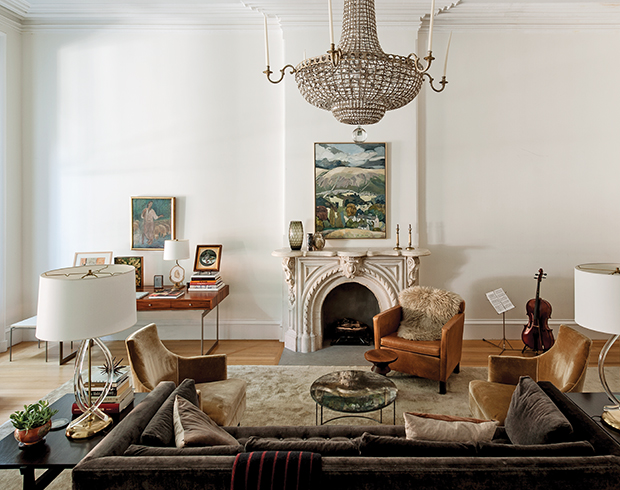
The New York brownstone has it all — stately moldings, sky-high ceilings, and the big city at their perfectly symmetrical doorsteps. There have been plenty of examples to lust after, from J.Crew creative director Jenna Lyons’ former Park Slope pile, to Sarah Jessica Parker’s famous brownstone, but it’s Remodelista co-founder Francesca Connolly’s 1870 home that really captures today’s style zeitgeist. Showcasing her own personalized and pared-back style, the blogger-turned-design darling’s home is a perfect pairing of dazzling and demure, curated and undone, vintage and modern.
She bought the Brooklyn Heights property 19 years ago with her husband and converted it from nine warren-like apartments into a duplex, and several years later into a single-family dwelling. At 26 feet wide, it’s a sweet piece of New York real estate and the finest object of our collective desire. Let’s look around, shall we?
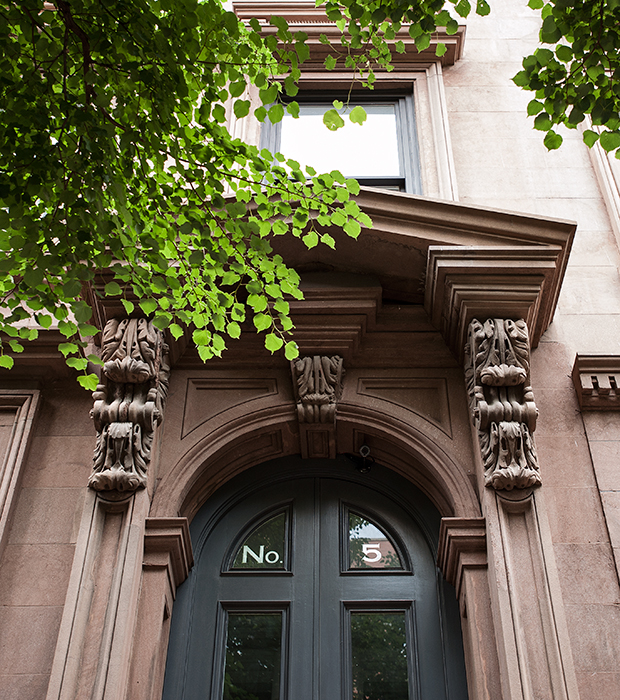
Many people use the term brownstone to refer to New York townhouses in general. More accurately, it’s a brick rowhouse that’s fronted by brown sandstone most likely quarried in Portland, Connecticut. Brownstone became popular when the Romantic movement made darker materials fashionable. Before then, granite, marble and limestone were the materials of choice. By 1860, brownstone was changing the face of New York’s streets.
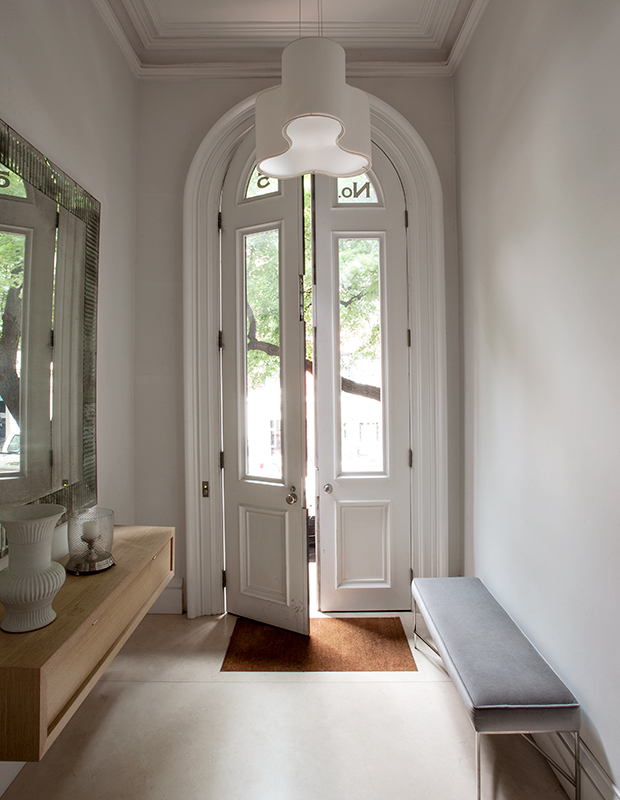
The entry’s extra-tall arched doors are typical of New York’s prettiest mid- to late-19th-century rowhouses and make a formidable first impression. Francesca put the home’s latest renovation into the hands of architect Steven Harris. Working together with his partner, interior designer Lucien Rees Roberts, he restored and modernized the five-storey house, even recreating the front stoop based on a historic photo of the brownstone from the 1930s. Inside, a curvy light fixture by Alvar Aalto mimics the lines of the doorway. A vintage bench covered in mohair, large mirror and floating shelf balance the space with sleek straight lines.
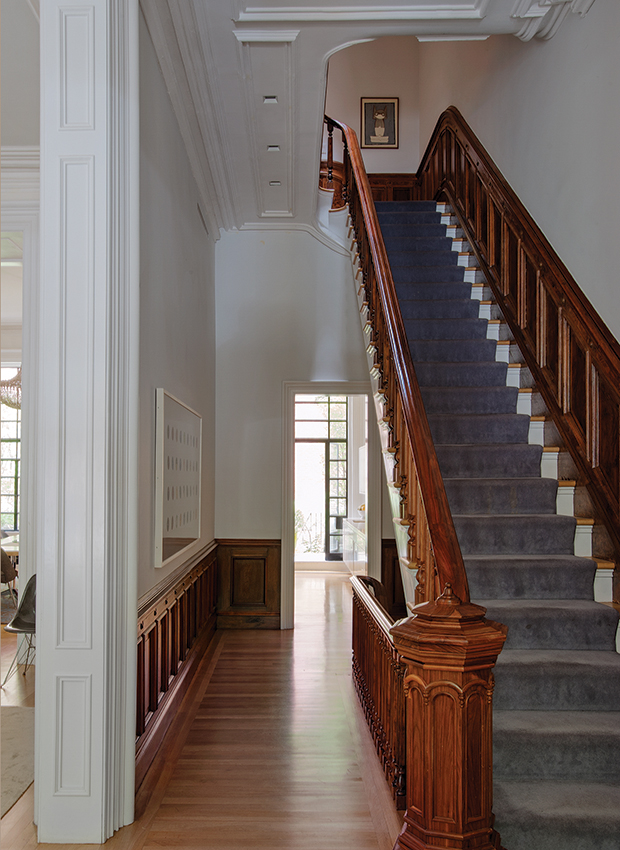
Crisp white walls let the handsome wood wainscotting and carved banister steal the spotlight in the hallways. Luckily, during the brownstone’s transformation to a nine-unit apartment, the original woodwork was preserved. Glimpses of it can also be stolen from the front parlor (brownstone speak for “living room”) and kitchen, as Steven opened up the layout for a lighter, airy look that’s still historically authentic. Once upon a time, sliding wood pocket doors would have closed off the front parlor and dining room.

Homeowners lucky enough to still have a brownstone’s original mantels — and pockets deep enough to restore them if they’ve been painted or damaged — are instantly gifted a regal focal point. In the front parlor, the original carved-marble mantel was paired with an ornate chandelier — a vintage Broadway prop — and plays to the room’s traditional role as a formal entertaining space. To balance this grandeur, comfortable, low-lying furniture like a sofa upholstered in grey mohair ensure the parlor is an inviting place to plop down with a book or doze in the afternoon sun.

Even die-hard minimalists get a little weak in the knees at the sight of a brownstone’s original plaster moldings. When the shell of a room is that refined, the furniture doesn’t need to work too hard or be too plentiful. Steven and Lucien looked to the weighty scale of the original cornices and moldings, but simplified their designs for additional millwork in order to create cleaner lines. The dining room’s industrial-style windows and door were put in in the earlier renovation and create an arresting contrast to the historic details.

It might seem surprising to build a narrow kitchen in a house so graciously sized, but having it on the parlor level better suited the kitchen’s current role as the hub of the home. When the house was built, the kitchen would have been located on the garden level.
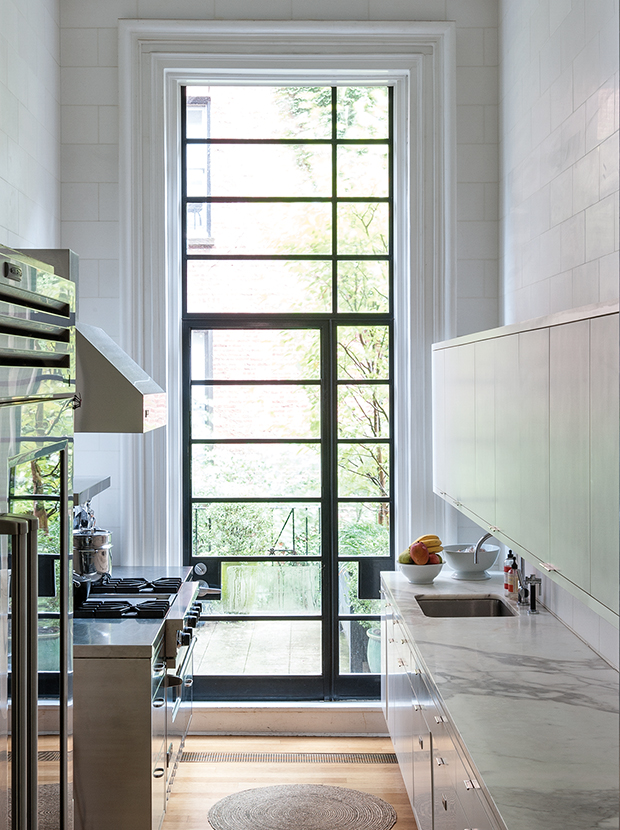
“But then you end up spending most of your time on the darkest bottom floor,” says Francesca of her decision to relocate it to this spot, which likely just held a butler’s pantry in its heyday. The design is resolutely modern, with sleek Corian cabinets, Statuario marble counters and walls swathed in Thassos marble tiles. It’s a sea of clean, calming white warmed by mid-toned wood floors and a wall of leaded glass leading to the patio.

The idolization of the brownstone is due in no small part to its vertigo-inducing ceilings. Steven pinpoints their peak at 14′ — high enough to make changing a lightbulb a small act of bravery, even on the upper floors. The principal bedroom still feels cozy though, thanks to pale blue walls (a 60-40 mix of Benjamin Moore’s Glass Slipper, 1632, and Cloud White, OC-130) and a velvet-covered chaise nestled next to the fireplace.
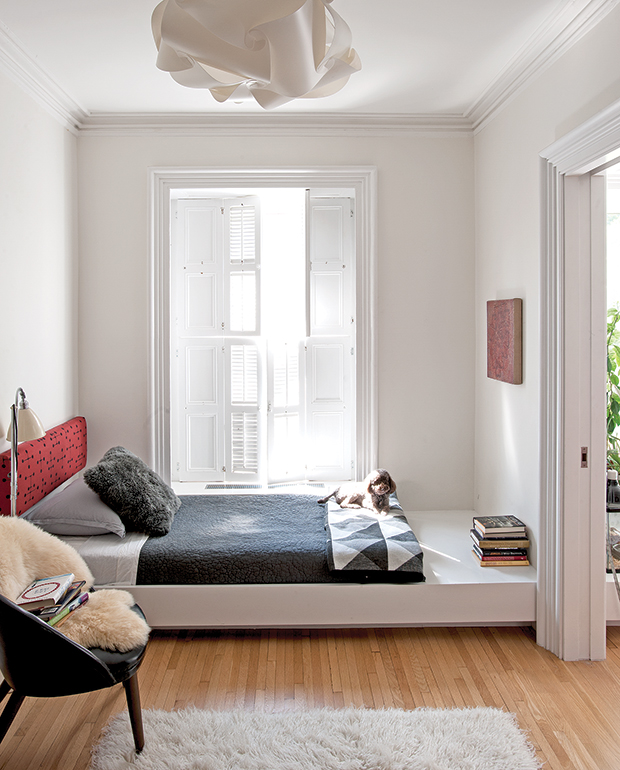
If natural light is a home’s most flattering asset, it’s no wonder brownstones have become a favorite location for everything from film to fashion shoots. Windows deep enough for louvered shutters to fold neatly into the frame fill rooms with sunshine. In one of the smaller bedrooms, a platform bed, set low, preserves the window’s full view.
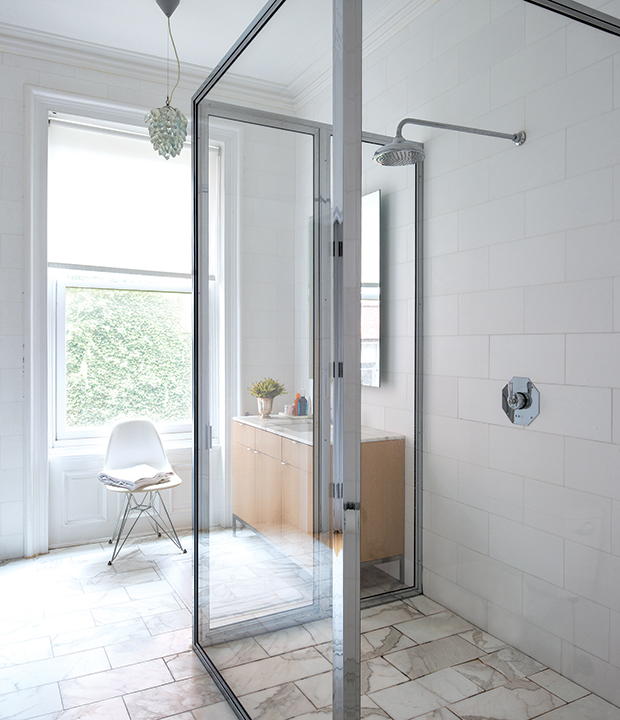
Modern updates give elegant bones a cool edge. The result is a home that doesn’t exactly mimic the style of an era, but interprets it for today. Luxury fittings in the principal bathroom continue this system of checks and balances. Expanded to fill a spare room, the bathroom is big enough to fit a generous, glassed-in shower. A metal frame gives it a tailored look, while glass panels let in plenty of light. Thassos marble tiles cover the walls, and more patterned Statuario marble is used on the floor.
Matthew Williams/Photofoyer
House & Home March 2016
Lucien Rees Roberts


